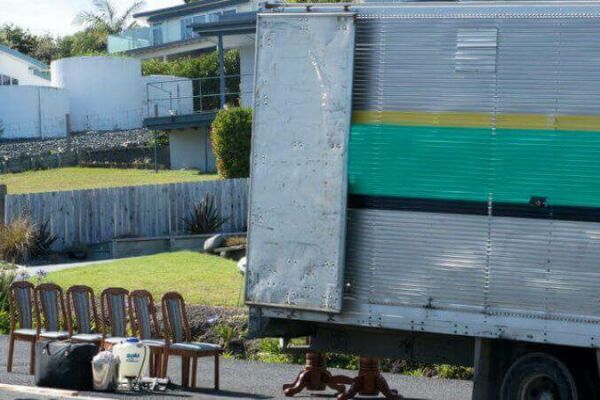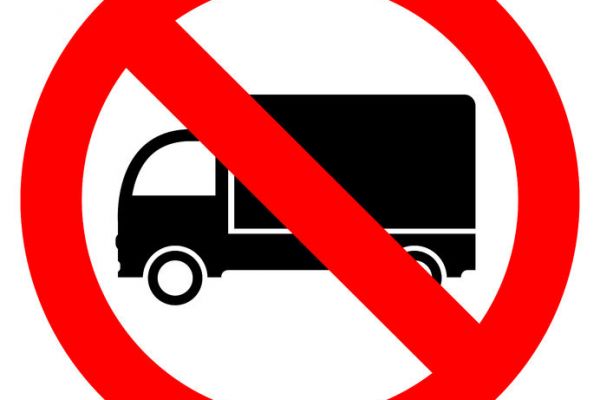Freight shipping—in this case, shipping via truck—is the most common method for transporting goods across the Canada-USA border. Cross-border shipping differs from domestic parcel or freight shipping in a number of ways, from customs paperwork to carrier requirements to security clearances. Understanding how the process works—and what information you need to provide—helps to ensure that your cargo can cross the border safely and with minimal delays.
There are many reasons why someone might need to ship items via freight from the USA into Canada, or vice versa, such as:
- A residential move
- Businesses shipping items to buyers
- Sending personal belongings to family or friends
Regardless of why you’re shipping over the border, preparing a cross-border shipment takes a little extra care and consideration. In this post, we’ll give you advice on the best way to choose a freight shipping carrier and prepare all the necessary documents, including:
- Choosing the right freight shipping partner
- Working with a customs broker
- Understanding freight class
- Estimating taxes and duties
- Gathering cross-border freight shipping documents
- Preparing for cross-border freight shipping
- Clearing customS
- Cross-border freight shipping FAQs
Let’s get started.
Choosing the Right Freight Shipping Partner
Each shipment is different and requires careful planning and organization. First things first, you’ll want to select a reputable freight shipping partner who not only has proven experience in cross-border hauling, but can also meet your timelines and budget.
In addition to reading peer reviews, knowing the answers to key questions can help you narrow down the right carrier. Select the questions from the following list that are important to you and get answers:
- How long have you been in business?
- Can I reach you after hours or on weekends to check on my shipment?
- Do you offer insurance?
- How long will it take for my items to arrive?
- Will you pack my items for me?
- Can I use my own boxes or do I have to buy special crates?
- How are my belongings labelled?
- Will my items be unpacked at their destination?
- Do you deliver door to door?
- Can I track my shipment online?
- How much will it cost to ship my items across the border?
- How do you determine the cost?
- Are there any extra fees I’ll have to pay?
- Will my items be on a truck with others’ belongings?
- What happens if my stuff gets lost or damaged in transit?
- Will you help me fill out all the required documents?
- Do you ship hazardous or restricted items?
- Why should I choose you over the competition?
Working with a Customs Broker
Customs brokers know all the ins and outs of cross-border freight shipping, including duties, taxes, costs, and paperwork requirements. If you’re shipping across the border, a licensed customs broker can significantly streamline the process by:
- Advising and helping you prepare required documents and entry forms
- Submitting required documents and forms to customs agencies
- Managing payment of duties, taxes, and fees
- Responding to CBP or CBSA concerns
Understanding Freight Class
You need to know your tariff classification number before shipping goods over the border. Along with the country of origin, this classification number will help determine the cost of your cross-border shipment.
Canada and the USA both use what is called the “Harmonized System”. The term “HS code” is often used synonymously with “freight classification number”.
Estimating Taxes and Duties
When you know your freight classification number, you can estimate taxes and duties on your shipment. Taxes and duties work differently in the USA and Canada, and will depend on your shipment’s country of origin and its destination. A customs broker or experienced cross-border shipping company can help you understand the differences and accurately estimate the cost of your shipment.
Gathering Cross-Border Freight Shipping Documents
There are a few special documents you may need to provide to ensure your cross-border shipment makes it safely—and efficiently—to its destination, including:
- BN or EIN
- Bill of lading (BOL)
- Certificate of origin (CO)
- A list of items
- North American Free Trade Agreement certificate of origin (NAFTA CO)
- Import permits
The exact documentation you’ll need to provide will depend on what you are shipping. Whether you’re shipping items for personal or commercial purposes, working with a customs broker or a shipper who specializes in cross-border shipping can simplify the shipping process, ensuring that all documentation is provided and includes the correct information.
Let’s take a closer look at each of these documents.
BN or EIN
You’ll need a Business Number (BN) or Employee Identification Number (EIN) to ship goods across the Canada-USA border. BNs can be acquired from the Canada Revenue Agency, and EINs are available through the IRS. BOL (or BL):
Bill of Lading
The BOL specifies the type, quantity, and destination of the goods being carried. It’s a legal document that can also serve as a shipment receipt. It must be signed by an authorized representative from the carrier, shipper, and receiver.
The BOL must contain:
- The address where the shipment is being picked up
- The size and weight of items
- The shipper’s contact information
CO: Certificate of Origin
The CO identifies the original location of the freight. It’s how customs duties are calculated at the border. Cross-border shippers are required to use this form to certify that the freight qualifies for preferential tariff treatment.
List of Items
Create a list of items that you’re shipping across the border. Include:
- Type of item and quantities
- Makes & model numbers
- Dimensions
- Item weights
- The amount and types of items inside each carton or crate
This document will help you avoid delays by speeding things up at the border.
NAFTA CO: North American Free Trade Agreement Certificate of Origin
Shippers must complete a NAFTA CO when seeking preferential treatment (or reduced duty) for eligible goods that exceed the value of either USD$1,000 or CAN$2,500. To qualify, you’ll need a NAFTA Certificate of Origin.
Get the Canadian NAFTA CO form
Import Permits
Both the United States and Canada have shipping restrictions on certain items, so you may need an import permit.
Before shipping from the US to Canada, check the list of federally regulated compliance requirements from the Government of Canada.
Before shipping from Canada to the US, check in the CBP for US shipping restrictions.
Preparing for Cross-Border Freight Shipping
Even with all the necessary paperwork, your freight shipper may still be subject to a border inspection. To make the process as seamless as possible, follow these tips:
- Ensure every item in every box is clearly labelled
- Avoid generic labels like “Kitchen” or “Electronics.” Instead, be specific. For example: “Kitchen - Dinnerware: Plates (8), bowls (6), serving platter (1)”; “Electronics: PlayStation game console (1), remote controls (2), power cord (1), HDMI cable (1)”
- Remember to label fragile items accordingly as well, just in case the boxes need to be searched or moved
- To avoid losing large items in transition, affix your own labels (with luggage tags, safety pins, duct tape, or staples) with your name, contact information and origin and destination details clearly written
When creating a packing list, jot down the number of boxes, cartons or containers for each category. For example:
Master Bedroom:
- 1 king-size 10” memory foam mattress
- 2-piece black bed frame
- 2 night tables
- 2 small lamps
- 4 blue storage bins
- 3 suitcases (clothing)
- 1 tall 5-drawer dresser (dark gray)
- 1 wide 8-drawer dresser with mirror (dark gray)
- 1 winter scene painting 2’ x 6” landscape
Clearing Customs
It’s possible to clear customs without the help of a broker, but a licensed broker can help ensure your shipment clears customs without delay. If you aren’t working with a customs broker, you may need power of attorney to clear any shipments. There are a few things you can do to ensure your shipment clears customs:
- Provide your customs broker or shipping company with any required information as soon as possible
- Carefully prepare paperwork and ensure all information is correct and legible
- Ensure boxes are clearly labelled and correspond with information noted in your paperwork
- Visibly display country of origin
Cross-Border Freight Shipping FAQs
What can a shipper do to help speed up the border crossing process?
You can speed up the border crossing process by ensuring all the necessary paperwork is provided up front and completed correctly. If you’re shipping goods to customers, you should also provide all available information about the product, its components, and manufacturing process to the broker prior to shipping.
Where do I start?
We recommend working with a customs broker to clear your freight. After that, you must get a PARS or PAPS number from a cross-border provider.
What is a PARS or PAPs number?
A PARS (Pre-Arrival Review System) number, also known as a CCN (Cargo Control Number), is an 8-digit number designated by the Canadian Border Services Agency. It’s used to clear commercial goods through customs and helps everyone save time by allowing information to be processed before freight arrives at the border.
The CBP in the United States also has a system to process information in advance called PAPS (Pre-Arrival Processing System). A PAPS number is the same as a PARS number, only in the USA.
Any commercial shipment that enters the USA or Canada by truck uses a PARS or PAPS number as the default shipping type.
What paperwork do I need to ship freight into Canada?
If you’re shipping freight into Canada, you’re required to have at least the following three documents:
- Bill of Lading
- Certificate of Origin
- Customs Invoice
Depending on your shipment, additional documents may also be required.
Do I have to use a Canadian freight carrier to move my items from the US to Canada – or vice versa?
No, you do not need to hire a Canadian company to move you into Canada. Nor do you need to hire a US company to move you into the United States. However, you do need to select a freight carrier whose drivers are approved to cross the border.




